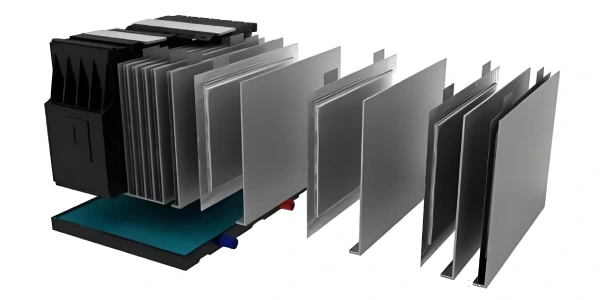Welcome to our insightful guide on lithium batteries! In today’s rapidly evolving technological landscape, understanding the fundamentals of lithium battery technology is essential for both consumers and industry professionals alike. As experts in the field of lithium battery manufacturing, we recognize the importance of providing comprehensive information to help individuals grasp the intricacies of this innovative power source. In this article, we aim to shed light on 10 key facts about lithium batteries, delving into their composition, functionality, applications, and more.
1. What are the commonly used standards for batteries?
Commonly used IEC standards for batteries:
The standard for nickel-metal hydride batteries is IEC61951-2:2003. Lithium-ion batteries generally comply with UL or national standards.
IEC, the International Electrical Commission, is a worldwide standardization organization composed of electrotechnical committees from various countries. Its purpose is to promote standardization in the world’s electrical and electronic fields. IEC standards are standards developed by the International Electrotechnical Commission.
In China, the national standards commonly used for batteries are as follows:
- Standards for nickel-metal hydride batteries: GB/T15100_1994, GB/T18288_2000;
- Lithium battery standards: GB/T10077_1998, YD/T998_1999, GB/T18287_2000.
In addition, the commonly used standards for batteries also include the Japanese Industrial Standard JIS.
2. What is the marking method for li-ion batteries specified by IEC?
Nickel metal hydride battery identification
According to IEC standards, the marking of nickel-metal hydride batteries consists of 5 parts.
01) Battery type: HF, HR means nickel-metal hydride battery
02) Battery size information: including the diameter and height of circular batteries and the height, width, and thickness of square batteries. Slashes separate the values, unit: mm
03) Discharge characteristic symbol: L indicates that the suitable discharge current rate is within 0.5C
M indicates that the suitable discharge current rate is within 0.5-3.5C.
H indicates that the suitable discharge current rate is within 3.5-7.0C.
X indicates that the battery can work at a high rate discharge current of 7C-15C
04) High temperature battery symbol: represented by T
05) Battery connecting piece representation: CF represents no connecting piece, HH represents the connecting piece for the battery pull-type series connection, and HB represents the connecting piece for the side-by-side series connection of battery strips.
For example:
HF18/07/49 means square nickel metal hydride battery, width is 18mm, thickness is 7mm, height is 49mm,
KRMT33/62HH means nickel-cadmium battery, the discharge rate is between 0.5C-3.5, high-temperature series single battery (without connecting piece), diameter 33mm, height 62mm.
Rechargeable lithium battery identification
According to the IEC61960 standard, the rechargeable lithium battery is marked as follows:
- The battery identification consists of 3 letters, followed by 5 numbers (cylindrical) or 6 (square) numbers.
- The first letter indicates the negative electrode material of the battery. I—represents lithium-ion with built-in battery; L—represents lithium metal or alloy electrodes.
- The second letter indicates the cathode material of the battery. C—cobalt-based electrode; N—nickel-based electrode; M—manganese-based electrode; V—vanadium-based electrode.
- The third letter indicates the shape of the battery. R—represents cylindrical battery; L—represents square battery.
- Numbers: Cylindrical battery: 5 numbers indicate the diameter and height of the battery, respectively. Diameter is measured in millimeters, and height is measured in tenths of a millimeter. A slash should be added between the two dimensions when either diameter or height is greater than or equal to 100mm.
Square battery: The 6 numbers represent the thickness, width, and height of the battery, respectively, in millimeters. A slash should be added between the dimensions when any of the three dimensions is greater than or equal to 100mm. If any of the three dimensions is less than 1mm, add the letter “t” before this dimension. This size is measured in tenths of a millimeter.
For example:
- ICR18650 represents a cylindrical rechargeable lithium-ion battery with a cobalt cathode material, a diameter of approximately 18mm and a height of approximately 65mm.
- ICP083448 represents a square rechargeable lithium-ion battery. The positive electrode material is cobalt. Its thickness is approximately 8mm, width is approximately 34mm, and height is approximately 48mm.
- ICP08/34/150 represents a square rechargeable lithium-ion battery. The positive electrode material is cobalt. Its thickness is about 8mm, width is about 34mm, and height is about 150mm.
- ICPt73448 represents a square rechargeable lithium-ion battery. The positive electrode material is cobalt. Its thickness is about 0.7mm, its width is about 34mm, and its height is about 48mm.
3. What are the packaging materials for lithium-ion batteries?
- Non-drying meson (paper) such as fiber paper and double-sided tape.
- PVC film, trademark pipe.
- Connecting piece: stainless steel, pure nickel, and nickel-plated steel.
- Lead-out sheet: stainless steel sheet (easy to solder), pure nickel sheet (strong spot welding).
- Plug type.
- Protection components include temperature control switches, overcurrent protectors, and current limiting resistors.
- Cartons and cartons.
- Plastic shells.
4. What is the purpose of battery packaging, assembly, and design?
- More beautiful and brand.
- The battery voltage is limited. Multiple batteries need to be connected in series to obtain a higher voltage.
- Protect the battery and prevent short circuits to extend the battery life.
- Size restrictions.
- Easy to transport.
- Design with special functions, such as waterproofing, special appearance design, etc.
5. Main properties of rechargeable lithium batteries
The main properties of rechargeable lithium batteries include voltage, internal resistance, capacity, energy density, internal pressure, self-discharge rate, cycle life, sealing performance, safety performance, storage performance, appearance, etc. Others include overcharge, over-discharge, corrosion resistance, etc.
6. What are the reliability tests for lithium batteries?
- Cycle life
- Discharge characteristics at different rates
- Discharge characteristics at different temperatures
- Charging characteristics
- Self-discharge characteristics
- Storage characteristics
- Over-discharge characteristics
- Internal resistance characteristics at different temperatures
- Temperature cycle test
- Drop test
- Vibration test
- Capacity test
- Internal resistance test
- GMS test
- High and low temperature impact test
- Mechanical impact test
- High temperature and high humidity test
7. What are the safety tests for lithium batteries?
- Short circuit test
- Overcharge and over-discharge test
- Withstand voltage test
- Impact test
- Vibration test
- Heating test
- Fire test
- Temperature changing cycle test
- Trickle charging test
- Free drop test
- Low pressure test
- Forced discharge test
- Electric hot plate test
- Thermal shock test
- Needle prick test
- Extrusion test
- Heavy object impact test
8. What are the differences between various rechargeable batteries?
Currently, nickel-cadmium, nickel-metal hydride, and lithium-ion rechargeable batteries are widely used in various portable power-consuming devices (such as laptops, cameras, mobile phones, etc.). Each rechargeable battery has its unique chemical properties.
The main difference between nickel-cadmium and nickel-metal hydride batteries is that nickel-metal hydride batteries have a higher energy density. Compared with batteries of the same type, the capacity of nickel-metal hydride batteries is twice that of nickel-cadmium batteries. This means that using nickel-metal hydride batteries can greatly extend the device’s operating time without adding extra weight to the powered device. Another advantage of nickel-metal hydride batteries is that the “memory effect” problem in cadmium batteries is greatly reduced, making nickel-metal hydride batteries more convenient to use. In addition, nickel-metal hydride batteries are more environmentally friendly than nickel-cadmium batteries because no toxic heavy metal elements are inside them.
Li-ion batteries have also quickly become the standard power source for portable devices. Li-ion batteries can provide the same energy as nickel-metal hydride batteries. But in terms of weight, it can be reduced by about 35%. This is critical for power-hungry devices like video cameras and laptops. Li-ion batteries have no “memory effect” and no toxic substances is also an important factor in making it a standard power source.
The discharge efficiency of nickel-metal hydride batteries will decrease significantly at low temperatures. Generally, charging efficiency increases with temperature. However, when the temperature rises above 45°C, the performance of rechargeable battery materials will degrade at high temperatures. The cycle life of the battery will also be greatly shortened.
9. What precautions should be taken when using the battery?
- Please read the battery manual carefully before use;
- Electrical appliances and battery contacts should be cleaned, wiped with a damp cloth if necessary, and then installed according to the polarity markings after drying;
- Do not mix old and new batteries, nor do you mix batteries of the same model but different types, to avoid reducing performance;
- Disposable batteries cannot be regenerated by heating or charging;
- Do not short-circuit the battery;
- Do not disassemble and heat the battery or throw the battery into water;
- When electrical appliances are not used for a long time, the batteries should be removed, and the switch should be turned off after use;
- Do not throw away used batteries at will, and put them separately from other garbage as much as possible to avoid polluting the environment;
- Do not allow children to change batteries without adult supervision. Small batteries should be placed out of reach of children;
- Batteries should be kept in a cool, dry place without direct sunlight.
10. What are the main factors that affect battery life?
01)Charge
When choosing a charger, it is best to use a charger with correct charging termination devices (such as an overcharge prevention time device, negative voltage difference (-dV) charging cutoff, and overheating prevention induction device) to prevent the battery from being overcharged and shortening its service life. Generally speaking, slow charging can extend the battery’s life better than fast charging.
02)Discharge
- The depth of discharge is the main factor affecting battery life. The higher the depth of discharge, the shorter the battery life. In other words, as long as the depth of discharge is reduced, the battery’s service life can be greatly extended. Therefore, we should avoid over-discharging the battery to extremely low voltages.
- When the battery is discharged at a high temperature, the service life of the battery will be shortened.
- If the designed electronic equipment cannot completely stop all currents or is left unused for a long time without taking out the battery, Residual current sometimes causes excessive battery consumption, causing the battery to over-discharge.
- Mixing batteries with different capacities, chemical structures, or charging levels, as well as old and new batteries, will cause excessive battery discharge and even reverse polarity charging.
03) Save
Suppose the battery is stored at a high temperature for a long time. In that case, its electrode activity will decay, and its service life will be shortened.
Related Tags:
More Articles

Comprehensive Guide to Choosing the Right Cart Battery
Choosing the right cart battery ensures optimal performance and longevity. This guide covers cart battery types and helps you make an informed choice.
The Ultimate Guide to 18650 Button Top Battery
18650 button top batteries are popular for their high energy density and reliability. This guide covers their key features, usage, and maintenance tips.
The Power of Slim: Unveiling the Potential of Flat Lithium Ion Battery
Flat lithium-ion batteries power devices from phones to vehicles. This article explores their design, benefits, types, applications, charging, and safety.
The Comprehensive Guide to Battery Balancing and Battery Balancer
Battery balancing and balancers optimize performance, longevity, and safety. This guide covers techniques and tips for choosing the right balancer.
10 Key Facts About Drone Battery for 2024
Uncover crucial insights with "10 Key Facts About Drone Battery for 2024." Learn the latest trends and essential details on drone batteries.




